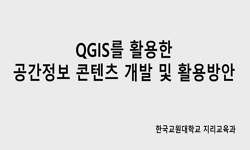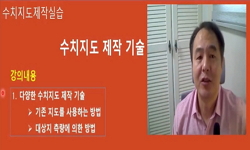In this study, 2-dimensional inundation analysis for Taehwa watershed in Ulsan metropolitan city was conducted to analyze flow behaviors, inundation depth and inundation stage, considering the building effect. Lidar having the interval of 1 m was empl...
http://chineseinput.net/에서 pinyin(병음)방식으로 중국어를 변환할 수 있습니다.
변환된 중국어를 복사하여 사용하시면 됩니다.
- 中文 을 입력하시려면 zhongwen을 입력하시고 space를누르시면됩니다.
- 北京 을 입력하시려면 beijing을 입력하시고 space를 누르시면 됩니다.

GIS를 활용한 2차원 침수해석에서의 건물영향 분석 = An Evaluation of Building Effect in 2-Dimensional Inundation Analysis Using GIS
한글로보기https://www.riss.kr/link?id=A82343792
- 저자
- 발행기관
- 학술지명
- 권호사항
-
발행연도
2010
-
작성언어
-
-
주제어
LiDAR ; GIS ; 확산파 ; 건물영향 ; 침수해석 ; Diffusion Wave ; Building Effect ; Inundation Analysis
-
KDC
500
-
등재정보
KCI등재
-
자료형태
학술저널
- 발행기관 URL
-
수록면
119-132(14쪽)
-
KCI 피인용횟수
14
- DOI식별코드
- 제공처
- 소장기관
-
0
상세조회 -
0
다운로드
부가정보
다국어 초록 (Multilingual Abstract)
In this study, 2-dimensional inundation analysis for Taehwa watershed in Ulsan metropolitan city was conducted to analyze flow behaviors, inundation depth and inundation stage, considering the building effect. Lidar having the interval of 1 m was employed to generate topographic data with 10m interval, and building data extracted from digital map was combined with the constructed topographic data for 2-dimensional inundation analysis. A few scenarios were constructed for the analysis to provide an effective and accurate inundation analysis method through analyzing the results. The disagreement based on the areas of inundation showed over 10% between the cases with and without consideration of building effect. The maximum inundation depth without considering the effects of buildings was 0.29m higher than that with considering the building effects. On the contrary, the maximum inundation stage with consideration of building effects was 0.49m higher than that without consideration of building effects.
참고문헌 (Reference)
1 한건연, "홍수터에서의 범람홍수류에 의한 2차원 수치모의" 33 (33): 483-493, 2000
2 건설교통부, "홍수지도제작지침"
3 국토해양부, "홍수위험지도 기본계획 보완 보고서. 3장" 109-220, 2008
4 강수만, "홍수범람해석모형을 이용한 침수피해 저감방안 연구 - 진위천 하천구간을 대상으로 -" 대한토목학회 27 (27): 583-590, 2007
5 이종태, "하천제방의 붕괴로 인한 제내지의 침수예측모형" 22 (22): 223-231, 1989
6 김종해, "하천 홍수범람모의를 위한 불확실도 해석기법의 적용" 한국수자원학회 36 (36): 661-671, 2003
7 김영주, "지하저류조 설치에 따른 침수피해 저감효과 분석" 대한토목학회 30 (30): 41-51, 2010
8 한건연, "도시하천에서의 홍수범람도 작성을 위한 2차원 모형의 개발" 28 (28): 119-131, 1995
9 최규현, "댐 붕괴 해석을 위한 2차원 홍수범람모형의 개발:Ⅰ.이론 및 모형의 검증" 대한토목학회 25 (25): 135-142, 2005
10 최규현, "댐 붕괴 해석을 위한 2차원 홍수범람모형의 개발: Ⅱ. 적용 예" 대한토목학회 25 (25): 143-150, 2005
1 한건연, "홍수터에서의 범람홍수류에 의한 2차원 수치모의" 33 (33): 483-493, 2000
2 건설교통부, "홍수지도제작지침"
3 국토해양부, "홍수위험지도 기본계획 보완 보고서. 3장" 109-220, 2008
4 강수만, "홍수범람해석모형을 이용한 침수피해 저감방안 연구 - 진위천 하천구간을 대상으로 -" 대한토목학회 27 (27): 583-590, 2007
5 이종태, "하천제방의 붕괴로 인한 제내지의 침수예측모형" 22 (22): 223-231, 1989
6 김종해, "하천 홍수범람모의를 위한 불확실도 해석기법의 적용" 한국수자원학회 36 (36): 661-671, 2003
7 김영주, "지하저류조 설치에 따른 침수피해 저감효과 분석" 대한토목학회 30 (30): 41-51, 2010
8 한건연, "도시하천에서의 홍수범람도 작성을 위한 2차원 모형의 개발" 28 (28): 119-131, 1995
9 최규현, "댐 붕괴 해석을 위한 2차원 홍수범람모형의 개발:Ⅰ.이론 및 모형의 검증" 대한토목학회 25 (25): 135-142, 2005
10 최규현, "댐 붕괴 해석을 위한 2차원 홍수범람모형의 개발: Ⅱ. 적용 예" 대한토목학회 25 (25): 143-150, 2005
11 전민우, "낙동강 제방 붕괴에 따른 범람홍수 해석" 한국수자원학회 38 (38): 259-269, 2005
12 최승용, "구조물의 영향을 고려한 GIS기반의 제내지 홍수범람해석" 한국지리정보학회 12 (12): 1-17, 2009
13 유재홍, "구리지역의 홍수범람해석" 1174-1178, 2005
14 Fennema, R.J, "computer model to simulate natural everglades hydrology. The Ecosystem and its Restoration" St. Lucie Press 249-289, 1994
15 이종형, "XP-SWMM 모형을 적용한 도시지역의 침수해석" 한국방재학회 08 (08): 155-161, 2008
16 Hromadka II, T.V, "Solving the two-dimensional diffusion flow model" 555-562, 1985
17 이창희, "SWMM을 연계한 DEM기반의 도시침수해석 모형" 한국수자원학회 39 (39): 441-452, 2006
18 Lai, C, "Numerical Modeling of Unsteady Open-Channel Flow" 14 : 161-333, 1986
19 최계운, "MOUSE 및 MIKE21 통합모델을 이용한 도시유역의 침수분석" 한국방재학회 7 (7): 75-83, 2007
20 최경록, "MIKE FLOOD를 이용한 홍수 범람해석 -우이천 유역을 중심으로-" 서울 시립대학교 2005
21 조완희, "GIS와 연계한 확산파 침수해석 모형의 적용에 대한 연구" 한국지리정보학회 12 (12): 88-100, 2009
22 하창용, "GIS를 활용한 LiDAR 자료의 밀도에 따른 2차원 침수해석" 한국지리정보학회 13 (13): 74-88, 2010
23 이창희, "GIS를 이용한 도시지역 침수해석" 한국지리정보학회 9 (9): 115-125, 2006
24 이창희, "Dual-Drainage 개념에 의한 도시침수해석모형의 개발" 대한토목학회 26 (26): 379-387, 2006
25 Akan, A.O, "Diffusion -wave flood routing in channel networks" ASCE 107 (107): 719-732, 1981
26 Tayfur, G, "Applicability of St. Venant equations for two-dimensional overland flows over rough infiltrating surface" ASCE 119 (119): 15-63, 1993
27 신영호, "2차원 수리모형을 이용한 홍수지도 제작 연구" 2576-2580, 2003
동일학술지(권/호) 다른 논문
-
해양온도차에너지 개발을 위한 해수온도차 출현확률 산정 방법 비교
- 한국지리정보학회
- 윤동영 ( Dong Young Yoon )
- 2010
- KCI등재
-
항공사진을 활용한 양양 해안사구 지역의 토지피복 변천 분석
- 한국지리정보학회
- 한갑수 ( Gab Soo Han )
- 2010
- KCI등재
-
개별 여행자를 위한 관광 순회 일정 안내 방법에 관한 연구 -부산광역시를 사례지역으로-
- 한국지리정보학회
- 이성규 ( Seong Kyu Lee )
- 2010
- KCI등재
-
공간통계기법을 이용한 태양광발전시설 입지 정확성 향상 방안
- 한국지리정보학회
- 김호용 ( Ho Yong Kim )
- 2010
- KCI등재
분석정보
인용정보 인용지수 설명보기
학술지 이력
| 연월일 | 이력구분 | 이력상세 | 등재구분 |
|---|---|---|---|
| 2026 | 평가예정 | 재인증평가 신청대상 (재인증) | |
| 2020-01-01 | 평가 | 등재학술지 유지 (재인증) |  |
| 2017-01-01 | 평가 | 등재학술지 유지 (계속평가) |  |
| 2013-01-01 | 평가 | 등재학술지 유지 (등재유지) |  |
| 2010-01-01 | 평가 | 등재학술지 유지 (등재유지) |  |
| 2008-01-01 | 평가 | 등재학술지 유지 (등재유지) |  |
| 2005-01-01 | 평가 | 등재학술지 선정 (등재후보2차) |  |
| 2004-01-01 | 평가 | 등재후보 1차 PASS (등재후보1차) |  |
| 2002-01-01 | 평가 | 등재후보학술지 선정 (신규평가) |  |
학술지 인용정보
| 기준연도 | WOS-KCI 통합IF(2년) | KCIF(2년) | KCIF(3년) |
|---|---|---|---|
| 2016 | 0.82 | 0.82 | 0.84 |
| KCIF(4년) | KCIF(5년) | 중심성지수(3년) | 즉시성지수 |
| 0.88 | 0.8 | 0.98 | 0.14 |




 ScienceON
ScienceON KISS
KISS






